ELECTRONIC
Electronics is the study of weak current electrical appliance which is operated by controlling the flow of electrons or electrically charged particles in a device such as computers, electronic devices, thermo couples , semiconductor, and so forth. The study of the tools such as this is a branch of physics, while the shape of the design and manufacture of electronic circuits are part of electrical engineering, computer engineering, and science / electronics and instrumentation engineering.
The tools use electronic employment base is referred to as electronic equipment (electronic devices). Examples of equipment (devices) This electronic: Ray Tube Cathode (Cathode Ray Tube, CRT), radio, TV, tape recorder, video cassette recorder (VCR), recording V C D, DVD recorders, video cameras, digital cameras, personal computers desk-top , laptop computers, PDAs (pocket PC), robots, smart cards, etc.

electronic circuit
a glimpse of bright cloud in electronics
bright cloud in electronics starting from the 20th century, involving three main components, namely the vacuum tube (vacuum tube), transistors and integrated circuits (integrated circuit). In 1883, Thomas Alva Edison discovered that electrons can move from a metal conductor to another through a vacuum. Discovery of conduction is known as the Edison effect. In 1904, John Fleming applied the Edison effect inventing a two-element electron tube called a diode, and Lee De Forest followed in 1906 with a three-element tube, the triode. These vacuum tubes were the devices that made manipulation of electrical energy possible so that it can be amplified and transmitted.
Application of electron tubes were first applied in the field of radio communications. Guglielmo Marconi pioneered the development of the telegraph without wires (wireless telegraph) in 1896 and a long-range radio communications in 1901. In 1918, Edwin Armstrong invented the "super - heterodyne" to select a radio signal or stations and can receive signals over long distances. Armstrong also found the wide band frequency modulation FM (wide-band) in 1935; previously only used AM or amplitude modulation in the range of 1920 to 1935. Bell Laboratories issued to public television in 1927, and this is still a form of electro mechanical. As electronic systems become quality assurance, the engineers Bell Labs introduced the cathode ray picture tube and color television. But Vladimir Zworykin, an engineer at the Radio Corporation of America (RCA), considered the "father of television" because its discovery, the picture tube and tube icono scope camera. In the mid 1950s, television has gone through radio for home use and entertainment.
Superheterodyne receiver

After the war, electron tubes used to develop the first computer, but the tube is not practical because of the size of the electronic components. In 1947, the transistor was invented by a team of engineers from Bell Laboratories. Transistor functions as vacuum tubes, but has a smaller size, lighter, less power consumption, and more powerful, and less expensive to produce with their combination of connective metal and semiconductor materials.
The concept of the integrated circuit was proposed in 1952 by Geoffrey W. A. Dummer, an electronics expert with the British Royal Radar Establishment her. In 1961, the integrated circuit into full production by a number of companies, and equipment design change rapidly and in a few different directions to adapt the technology.
electronic components
Electronic components in the form of a tool in the form of objects that are part of supporting an electronic circuit that can work according to their usefulness. Starting from that attaches directly to the circuit board in the form of PCB, CCB, proto board or vero board by way of soldered or attached directly to the circuit board (with other interfaces, such as a cable).
An electronic component is composed of one or more of electronics, consisting of one or more elements of the material and if put together, to design a desired circuit can function according to the function of each component, there is to regulate current and voltage, leveling the flow, insulate current, amplify the signal flow, and many other functions.
passive components
Resistor or custody
Capacitors or capacitor
Inductor or coil
Transformer
active components
diodes
light-emitting diode
photo diodes
diode lasers
Zener diodes
diodes Bridge
Schottky diodes
Transistor
Field effect transistor
bipolar transistor
IGBT transistors
Darlington transistors
photo transistor
Sensors and actuators electro mechanical
microphone
Speaker
strain gauge
Switch
thermistors
MEMS (Micro Electro Mechanical Systems)
The series of analogue frequency generator of Hitachi J100Analog circuits
Circuits Analog or Analog circuits are the type of electronic circuit that is used to process a signal or cue that is continuous. Analog signal changes in the circuit are gradually covering all the points on the maximum and minimum signal amplitudes. This is different from the nature of the digital signal, where the signal is only just two kinds of levels: high (states 1) and low (expressed 0).
Examples of analog circuits:
brace
Operating amplifier (Operational Amplifier) including negative feedback
gyrator


Digital circuits
Digital electronics are electronic systems that use digital signaling. Digital electronics is a representation of Boolean algebra and are used in computers, mobile phones and various other consumer products. In a digital circuit, the signal is represented by one of two conditions, namely 1 (high, active, true,) and 0 (low, nonactive, false). Or if direspresentasika the first voltage can mean the maximum voltage (typically 5 V or 3 V) and 0 means the minimum voltage (typically 0 V, but there is also a 2.5 V). this is because the variance in material.
Examples of digital circuits:
Logic gates
(DL, RTL, RTL, DTL, TTL, ECL, CMOS, NMOS, HMOS)
Flip-flop
Binary counter (English: counter)
Register
Multiplexer (MUX) and demux
Binary adder (adder), subtractor & binary multiplier (Multiplier)
microprocessors
microcontroller
ADC, DAC, Atmel AVR
Digital signal processing (DSP)
FPGA (Field-Programmable Gate Array), ASIC, FPAA, Embedded-FPGA, CPLD
All types of digital computers: super-computer, mainframe, minicomputer, personal computer desktops, laptops, PDAs, smart cards, smart phone, etc.
Digital voltmeter measuring devices that are measuring circuit his prototaipMeasuring instrument
Measuring instrument
In physics and engineering, measurement is the activity that compares the physical quantity of the object and the real-world events. Measuring instrument is a device used to measure objects or events. The entire measuring device can be exposed to varying equipment fault. Field of science that studies the ways of measurement is called metrology.
Physicists use a lot of tools to make their measurements. It begins with simple tools such as rulers and stopwatches to electron microscopes and particle accelerators. Virtual instruments are used extensively in the development of modern measuring devices.
Examples of electronic measuring instrument:
Ohm-meter
Amper-meter
voltmeter
multimeter
Multitester Analog / Digital
oscilloscope
generator function
Digital Signal Analyzer
Spectrum meter
electronics industry
The electronics industry, in particular means of consumer electronics appeared in the 20th century and has now become a multi billion-dollar global industry. Contemporary society using all sorts of electronic devices are built in factories automatically or semi-automatically operated by the industry.
Size of the industry and the use of toxic materials, as well as the difficulty of recycling has caused a series of problems with electronic waste. International regulations and environmental legislation has been developed in an effort to address this issue.

Digital voltmeter measuring devices that are measuring circuit his prototype

Workers in an electronics factory

X . I
The scope of materials science engineering work
The scope of materials science engineering working at the atomic and molecular levels to create the microscopic devices and systems essential for cutting-edge solar energy production, energy storage, information technology and medicine .
materials science engineering involves a wide range of engineering applications of biology, chemistry and physics and electronics as the top domain. processing synthetic soft materials biological and synthetic and hard materials, usually in nano - domain represents the future of materials science engineering, the thought process of using the technique of advanced mathematical and simulation to explore the processing of atoms and molecules - the levels of hardware and software and are familiar with the art design for a tool who have character. materials science techniques have contributed significantly to modern technology more application domains, including energy, photonics, electronics, advanced materials, environmental, pharmaceutical and regenerative medicine.
material science engineering in the review of the future : application of materials science engineering in the field of biological sciences at the interface with the drug include the synthesis of enzymatic pharmaceutical natural products that are relevant, the metabolic pathway analysis of microbes and plants, while the application of the science of engineering materials in the electronics field, namely for flexible performance of electronic equipment , performance-based sensors, tissue engineering and drug regeneratif. Application of alternative energy focus on chemical-to-electrical and electrical - to - chemical conversion and energy storage in batteries and other electrochemical devices. Nanostructured and constrained geometry of the thin film materials provide a rich area of research with the study of elastic dense microstructure, nano electronic devices and photonic, plasmonic and metamaterials colloids. Engineering processes at the level of atoms or molecules are applied to the understanding of force and motion in living cells, atomic layer deposition, biological fluids rheology relevant, nanocrystal and nanowire synthesis and directed self - assembly.

X . III
Materials science
The interdisciplinary field of materials science, also commonly termed materials science and engineering, involves the discovery and design of new materials, with an emphasis on solids. The intellectual origins of materials science stem from the Enlightenment, when researchers began to use analytical thinking from chemistry, physics, and engineering to understand ancient, phenomenological observations in metallurgy and mineralogy. Materials science still incorporates elements of physics, chemistry, and engineering. As such, the field was long considered by academic institutions as a sub-field of these related fields. Beginning in the 1940s, materials science began to be more widely recognized as a specific and distinct field of science and engineering, and major technical universities around the world created dedicated schools of the study.- Materials science is a syncretic discipline hybridizing metallurgy, ceramics, solid-state physics, and chemistry. It is the first example of a new academic discipline emerging by fusion rather than fission.
Materials scientists emphasize understanding how the history of a material (its processing) influences its structure, and thus the material's properties and performance. The understanding of processing-structure-properties relationships is called the § materials paradigm. This paradigm is used to advance understanding in a variety of research areas, including nanotechnology, biomaterials, and metallurgy. Materials science is also an important part of forensic engineering and failure analysis - investigating materials, products, structures or components which fail or which do not operate or function as intended, causing personal injury or damage to property. Such investigations are key to understanding, for example, the causes of various aviation accidents and incidents.

A diamond cuboctahedron showing seven crystallographic planes, imaged with scanning electron microscopy.
bright cloudbright cloud of materials scienceA late Bronze Age sword or dagger blade.
The material of choice of a given era is Often a defining point. Phrases such as Stone Age, Bronze Age, Iron Age, and Steel Age are great examples. Originally deriving from the manufacture of ceramics and its putative derivative of metallurgy, materials science is one of the oldest forms of engineering and applied science. Modern materials science evolved Directly from metallurgy, the which itself evolved from mining and (Likely) ceramics and the use of fire. A major breakthrough in the understanding of materials occurred in the late 19th century, when the American scientist J. Willard Gibbs demonstrated that the thermodynamic properties related to atomic structure in various phases are related to the physical properties of a material. Important elements of modern materials science are a product of the space race: the understanding and engineering of the metallic alloys, and silica and carbon materials, used in building space vehicles enabling the exploration of space. Materials science has driven, and been driven by, the development of revolutionary technologies such as Rubbers, plastics, semiconductors, and bio materials.
Before the 1960s (and in some cases Decades after), many materials science departments were named metallurgy departments, reflecting the 19th and early 20th century emphasis on metals. The growth of materials science in the United States was catalyzed in part by the Advanced Research Projects Agency, the which funded a series of university-hosted Laboratories in the early 1960s "to expand the national program of basic research and training in the materials sciences." The field has since broadened to include every class of materials, Including ceramics, polymers, semiconductors, magnetic materials, medical implant materials, biological materials, and nano materials.

A late Bronze Age sword or dagger blade.
Basic foundation
The materials paradigm represented in the form of a tetrahedron.
A material is defined as a substance (most Often a solid, but of condensed phases can be included) that is intended to be used for Certain applications. There are a myriad of materials around us-they can be found in anything from buildings to spacecraft. Generally materials can be divided into two classes: crystalline and non-crystalline. The traditional examples of materials are metals, semiconductors, ceramics and polymers. New and advanced materials that are being developed include nano materials and bio materials, etc.
The basis of materials science involves studying the structure of materials, and Relating them to Reviews their properties. Once a materials scientist knows about this structure-property correlation, they can then go on to study the relative performance of a material in a given application. The major determinants of the structure of a material and Tus of its properties are its constituent chemical elements and the way in the which it has been processed into its final form. Reviews These characteristics, taken together and related through the laws of thermodynamics and kinetics, govern a material's micro structure, and Tus its properties.structure
As Mentioned above, structure is one of the most important components of the field of materials science. Materials science examines the structure of materials from the atomic scale, all the way up to the macro scale. Characterization is the way materials scientists examine the structure of a material. This involves methods such as diffraction with X-rays, electrons, or neutrons, and various forms of spectroscopy and chemical analysis such as Raman spectroscopy, energy - dispersive spectroscopy (EDS), chromatography, thermal analysis, electron microscope analysis, etc. Structure is studied at various levels, as detailed below.Atomic structureThis offer section with the atoms of the materials, and how they are arranged to give molecules, crystals, etc. Much of the electrical, magnetic and chemical properties of materials Arise from this level of structure. The length scales are Involved in angstroms. The way in the which the atoms and molecules are bonded and arranged is fundamental to studying the properties and behavior of any material.

The materials paradigm represented in the form of a tetrahedron.
Atomic structure
This deals with the atoms of the materials, and how they are arranged to give molecules, crystals, etc. Much of the electrical, magnetic and chemical properties of materials arise from this level of structure. The length scales involved are in angstroms. The way in which the atoms and molecules are bonded and arranged is fundamental to studying the properties and behavior of any material.Nanostructure
Buckminsterfullerene nanostructure.
In describing nanostructures it is necessary to differentiate between the number of dimensions on the nanoscale. Nanotextured surfaces have one dimension on the nanoscale, i.e., only the thickness of the surface of an object is between 0.1 and 100 nm. Nanotubes have two dimensions on the nanoscale, i.e., the diameter of the tube is between 0.1 and 100 nm; its length could be much greater. Finally, spherical nanoparticles have three dimensions on the nanoscale, i.e., the particle is between 0.1 and 100 nm in each spatial dimension. The terms nanoparticles and ultrafine particles (UFP) often are used synonymously although UFP can reach into the micrometre range. The term 'nanostructure' is often used when referring to magnetic technology. Nanoscale structure in biology is often called ultrastructure.
Materials which atoms and molecules form constituents in the nanoscale (i.e., they form nanostructure) are called nanomaterials. Nanomaterials are subject of intense research in the materials science community due to the unique properties that they exhibit.
Microstructure
Microstructure of pearlite.
The manufacture of a perfect crystal of a material is physically impossible. For example, a crystalline material will contain defects such as precipitates, grain boundaries (Hall–Petch relationship), interstitial atoms, vacancies or substitutional atoms. The microstructure of materials reveals these defects, so that they can be studied.
Macro structure
Macro structure is the appearance of a material in the scale millimeters to meters—it is the structure of the material as seen with the naked eye.Crystallography
Crystal structure of a perovskite with a chemical formula ABX3.
Bonding
To obtain a full understanding of the material structure and how it relates to its properties, the materials scientist must study how the different atoms, ions and molecules are arranged and bonded to each other. This involves the study and use of quantum chemistry or quantum physics. Solid-state physics, solid-state chemistry and physical chemistry are also involved in the study of bonding and structure.Properties
Materials exhibit myriad properties, including the following.-
- Mechanical properties, see Strength of materials
- Chemical properties, see Chemistry
- Electrical properties, see Electricity
- Thermal properties, see Thermodynamics
- Optical properties, see Optics and Photonics
- Magnetic properties, see Magnetism
Synthesis and processing
Synthesis and processing involves the creation of a material with the desired micro-nanostructure. From an engineering standpoint, a material cannot be used in industry if no economical production method for it has been developed. Thus, the processing of materials is vital to the field of materials science.Different materials require different processing or synthesis methods. For example, the processing of metals has historically been very important and is studied under the branch of materials science named physical metallurgy. Also, chemical and physical methods are also used to synthesize other materials such as polymers, ceramics, thin films, etc. As of the early 21st century, new methods are being developed to synthesize nanomaterials such as graphene.
Thermodynamics
A phase diagram for a binary system displaying a eutectic point.
The study of thermodynamics is fundamental to materials science. It forms the foundation to treat general phenomena in materials science and engineering, including chemical reactions, magnetism, polarizability, and elasticity. It also helps in the understanding of phase diagrams and phase equilibrium.
Kinetics
Chemical kinetics
Chemical kinetics is the study of the rates at which systems that are out of equilibrium change under the influence of various forces. When applied to materials science, it deals with how a material changes with time (moves from non-equilibrium to equilibrium state) due to application of a certain field. It details the rate of various processes evolving in materials including shape, size, composition and structure. Diffusion is important in the study of kinetics as this is the most common mechanism by which materials undergo change.Kinetics is essential in processing of materials because, among other things, it details how the microstructure changes with application of heat.
In research
Materials science has received much attention from researchers. In most universities, many departments ranging from physics to chemistry to chemical engineering, along with materials science departments, are involved in materials research. Research in materials science is vibrant and consists of many avenues. The following list is in no way exhaustive. It serves only to highlight certain important research areas.Nanomaterials
A scanning electron microscopy image of carbon nano tubes bundles
Nano materials research takes a materials science-based approach to nanotechnology, leveraging advances in materials metrology and synthesis which have been developed in support of microfabrication research. Materials with structure at the nano scale often have unique optical, electronic, or mechanical properties.
The field of nano materials is loosely organized, like the traditional field of chemistry, into organic (carbon-based) nano materials such as fullerenes, and inorganic nano materials based on other elements, such as silicon. Examples of nano materials include fullerenes, carbon nanotubes, nanocrystals, etc.
Biomaterials
A biomaterial is any matter, surface, or construct that interacts with biological systems. As a science, bio materials is about fifty years old. The study of biomaterials is called bio materials science. It has experienced steady and strong growth over its history, with many companies investing large amounts of money into developing new products. Biomaterials science encompasses elements of medicine, biology, chemistry, tissue engineering, and materials science.Biomaterials can be derived either from nature or synthesized in a laboratory using a variety of chemical approaches using metallic components, polymers, ceramics, or composite materials. They are often used and/or adapted for a medical application, and thus comprises whole or part of a living structure or biomedical device which performs, augments, or replaces a natural function. Such functions may be benign, like being used for a heart valve, or may be bioactive with a more interactive functionality such as hydroxylapatite coated hip implants. Biomaterials are also used everyday in dental applications, surgery, and drug delivery. For example, a construct with impregnated pharmaceutical products can be placed into the body, which permits the prolonged release of a drug over an extended period of time. A biomaterial may also be an autograft, allograft or xenograft used as an organ transplant material.
Electronic, optical, and magnetic
Semiconductors, metals, and ceramics are used today to form highly complex systems, such as integrated electronic circuits, optoelectronic devices, and magnetic and optical mass storage media. These materials form the basis of our modern computing world, and hence research into these materials is of vital importance.Semiconductors are a traditional example of these types of materials. They are materials that have properties that are intermediate between conductors and insulators. Their electrical conductivities are very sensitive to impurity concentrations, and this allows for the use of doping to achieve desirable electronic properties. Hence, semiconductors form the basis of the traditional computer.
This field also includes new areas of research such as superconducting materials, spintronics, metamaterials, etc. The study of these materials involves knowledge of materials science and solid-state physics or condensed matter physics.
Computational science and theory
With the increase in computing power, simulating the behavior of materials has become possible. This enables materials scientists to discover properties of materials formerly unknown, as well as to design new materials. Up until now, new materials were found by time consuming trial and error processes. But, now it is hoped that computational methods could drastically reduce that time, and allow tailoring materials properties. This involves simulating materials at all length scales, using methods such as density functional theory, molecular dynamics, etc.In industry
Radical materials advances can drive the creation of new products or even new industries, but stable industries also employ materials scientists to make incremental improvements and troubleshoot issues with currently used materials. Industrial applications of materials science include materials design, cost-benefit tradeoffs in industrial production of materials, processing methods (casting, rolling, welding, ion implantation, crystal growth, thin-film deposition, sintering, glassblowing, etc.), and analytic methods (characterization methods such as electron microscopy, X-ray diffraction, calorimetry, nuclear microscopy (HEFIB), Rutherford backscattering, neutron diffraction, small-angle X-ray scattering (SAXS), etc.).Besides material characterization, the material scientist or engineer also deals with extracting materials and convering them into useful forms. Thus ingot casting, foundry methods, blast furnace extraction, and electrolytic extraction are all part of the required knowledge of a materials engineer. Often the presence, absence, or variation of minute quantities of secondary elements and compounds in a bulk material will greatly affect the final properties of the materials produced. For example, steels are classified based on 1/10 and 1/100 weight percentages of the carbon and other alloying elements they contain. Thus, the extracting and purifying methods used to extract iron in a blast furnace can affect the quality of steel that is produced.
Ceramics and glasses
Si3N4 ceramic bearing parts
Engineering ceramics are known for their stiffness and stability under high temperatures, compression and electrical stress. Alumina, silicon carbide, and tungsten carbide are made from a fine powder of their constituents in a process of sintering with a binder. Hot pressing provides higher density material. Chemical vapor deposition can place a film of a ceramic on another material. Cermets are ceramic particles containing some metals. The wear resistance of tools is derived from cemented carbides with the metal phase of cobalt and nickel typically added to modify properties.
Composites
A 6 μm diameter carbon filament (running from bottom left to top right) siting atop the much larger human hair.
Another application of materials science in industry is making composite materials. These are structured materials composed of two or more macroscopic phases. Applications range from structural elements such as steel-reinforced concrete, to the thermal insulating tiles which play a key and integral role in NASA's Space Shuttle thermal protection system which is used to protect the surface of the shuttle from the heat of re-entry into the Earth's atmosphere. One example is reinforced Carbon-Carbon (RCC), the light gray material which withstands re-entry temperatures up to 1,510 °C (2,750 °F) and protects the Space Shuttle's wing leading edges and nose cap. RCC is a laminated composite material made from graphite rayon cloth and impregnated with a phenolic resin. After curing at high temperature in an autoclave, the laminate is pyrolized to convert the resin to carbon, impregnated with furfural alcohol in a vacuum chamber, and cured-pyrolized to convert the furfural alcohol to carbon. To provide oxidation resistance for reuse ability, the outer layers of the RCC are converted to silicon carbide.
Other examples can be seen in the "plastic" casings of television sets, cell-phones and so on. These plastic casings are usually a composite material made up of a thermoplastic matrix such as acrylonitrile butadiene styrene (ABS) in which calcium carbonate chalk, talc, glass fibers or carbon fibers have been added for added strength, bulk, or electrostatic dispersion. These additions may be termed reinforcing fibers, or dispersants, depending on their purpose.
Polymers
The repeating unit of the polymer polypropylene
Expanded polystyrene polymer packaging.
Polyvinyl chloride (PVC) is widely used, inexpensive, and annual production quantities are large. It lends itself to an vast array of applications, from artificial leather to electrical insulation and cabling, packaging, and containers. Its fabrication and processing are simple and well-established. The versatility of PVC is due to the wide range of plasticisers and other additives that it accepts. The term "additives" in polymer science refers to the chemicals and compounds added to the polymer base to modify its material properties.
Polycarbonate would be normally considered an engineering plastic (other examples include PEEK, ABS). Such plastics are valued for their superior strengths and other special material properties. They are usually not used for disposable applications, unlike commodity plastics.
Specialty plastics are materials with unique characteristics, such as ultra-high strength, electrical conductivity, electro-fluorescence, high thermal stability, etc.
The dividing lines between the various types of plastics is not based on material but rather on their properties and applications. For example, polyethylene (PE) is a cheap, low friction polymer commonly used to make disposable bags for shopping and trash, and is considered a commodity plastic, whereas medium-density polyethylene (MDPE) is used for underground gas and water pipes, and another variety called ultra-high-molecular-weight polyethylene (UHMWPE) is an engineering plastic which is used extensively as the glide rails for industrial equipment and the low-friction socket in implanted hip joints.
Metal alloys
Wire rope made from steel alloy.
Other significant metallic alloys are those of aluminium, titanium, copper and magnesium. Copper alloys have been known for a long time (since the Bronze Age), while the alloys of the other three metals have been relatively recently developed. Due to the chemical reactivity of these metals, the electrolytic extraction processes required were only developed relatively recently. The alloys of aluminium, titanium and magnesium are also known and valued for their high strength-to-weight ratios and, in the case of magnesium, their ability to provide electromagnetic shielding. These materials are ideal for situations where high strength-to-weight ratios are more important than bulk cost, such as in the aerospace industry and certain automotive engineering applications.
Semiconductors
The study of semiconductors is a significant part of materials science. A semiconductor is a material that has a resistivity between a metal and insulator. It's electronic properties can be greatly altered through intentionally introducing impurities, or doping. From these semiconductor materials, things such as diodes, transistors, light-emitting diodes (LEDs), and analog and digital electric circuits can be built, making them materials of interest in industry. Semiconductor devices have replaced thermionic devices (vacuum tubes) in most applications. Semiconductor devices are manufactured both as single discrete devices and as integrated circuits (ICs), which consist of a number—from a few to millions—of devices manufactured and interconnected on a single semiconductor substrate.Of all the semiconductors in use today, silicon makes up the largest portion both by quantity and commercial value. Monocrystalline silicon is used to produce wafers used in the semiconductor and electronics industry. Second to silicon, gallium arsenide (GaAs) is the second most popular semiconductor used. Due to its higher electron mobility and saturation velocity compared to silicon, its a material of choice for high speed electronics applications. These superior properties are compelling reasons to use GaAs circuitry in mobile phones, satellite communications, microwave point-to-point links and higher frequency radar systems. Other semiconductor materials include germanium, silicon carbide, and gallium nitride and have various applications.
education of material science to other fields
Materials science evolved—starting from the 1960s—because it was recognized that to create, discover and design new materials, one had to approach it in a unified manner. Thus, materials science and engineering emerged at the intersection of various fields such as metallurgy, solid state physics, chemistry, chemical engineering, mechanical engineering and electrical engineering.The field is inherently interdisciplinary, and the materials scientists/engineers must be aware and make use of the methods of the physicist, chemist and engineer. The field thus, maintains close relationships with these fields. Also, many physicists, chemists and engineers also find themselves working in materials science.
The overlap between physics and materials science has led to the offshoot field of materials physics, which is concerned with the physical properties of materials. The approach is generally more macroscopic and applied than in condensed matter physics.
The field of materials science and engineering is important both from a scientific perspective, as well as from an engineering one. When discovering new materials, one encounters new phenomena that may not have been observed before. Hence, there is lot of science to be discovered when working with materials. Materials science also provides test for theories in condensed matter physics.
Materials are of the utmost importance for engineers, as the usage of the appropriate materials is crucial when designing systems. As a result, materials science is an increasingly important part of an engineer's education.
X . IIII
review space technology to the needs of the science of engineering materials available on earth and beyond earth LJBUSAF
Space technology is a technology used to go to, and retrieve objects from outer space. Tech weather forecasting, satellite television, until the GPS system is an everyday technology that utilizes the infrastructure that was built in outer space. Science such as astronomy and earth science also utilize space technology to conduct remote sensing.
Space race and the Cold War between the United States and the Soviet Union made the development of space technologies of developing very fast. Technology resulting from these developments are not only used by the perpetrators of space flight, but to everyday life. Advances in technology of distance communication up to freeze-drying technology originally developed for space flight, but is now used in everyday life. however :
Space technology-specific
Here is a technology developed specifically for and / or utilize space flight:
Ablative heat protective
Aerobot
braking atmospheric
rocket booster
A centrifuge is used to generate artificial gravity in space
Framework rocket launch
rocket launcher
Lunar Rover
Mars Rover
Launch system that can be reused: The space shuttle and the X-37 spacecraft is a system that can be reused in part.
Satellite
satellite communications
telecommunications satellites
Earth observation satellites
satellite navigation
satellite television
Future space technology
mining asteroids
Single stage to orbit
The launch of the space non-rocket
Manufacturing Space
anchoring the sky
Electronic Materials research supporting research for the future of space technology

Electronic Materials
Research in the area of electronic materials covers a broad spectrum
of activities, ranging from pure electronic or photonic to
opto-electronic and electrochemical devices. The types of materials also
cover a broad spectrum, including III-V semiconductor thin films and
quantum dots, amorphous oxides and chalcogenides, single crystal oxide
heteroepitaxial films, organic semiconductors, electrochemical
composites, and others. With cutting-edge applications that include
dense non-volatile memories, energy efficient computation,
light-emitting diodes, lasers, photovoltaics, solid oxide fuel cells,
and batteries, the research groups in electronic materials are highly
interdisciplinary and work closely with groups in Electrical and
Computer Engineering, Chemical Engineering, Chemistry, and Physics. In
addition to electrical and optical characterization, the groups rely
heavily on a suite of characterization tools in Materials Characterization Facility, such as transmission electron microscopy, x-ray diffraction, and atomic force microscopy and on CMU Nanofabrication Facility
providing an array of deposition and processing tools for electronic
devices. Moreover, research groups in this area maintain extensive
facilities for growth and processing of electronic materials.
Space exploration is the physical exploration of objects beyond Earth and usually involves technology, science, and politics related to outer space.
 The height of the air space travelers are usually located at the level of the thermosphere
The height of the air space travelers are usually located at the level of the thermosphere  Space Shuttle Columbia seconds after engine ignition, 1981 (NASA)
Space Shuttle Columbia seconds after engine ignition, 1981 (NASA) Current and future development
exploration of Mars
Future energy development
space tourism
Private space flight
space colonization
Browsing interstellar
The space station
Space and safety
disaster space
Space and safety
disaster space

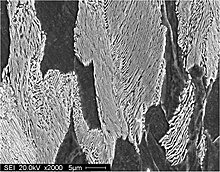
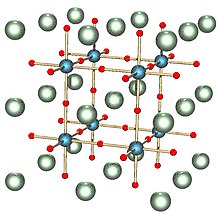



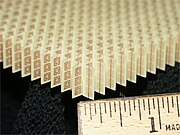

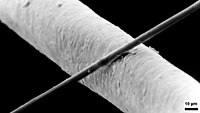

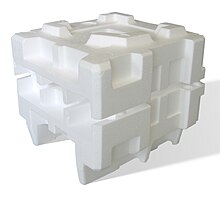

Tidak ada komentar:
Posting Komentar